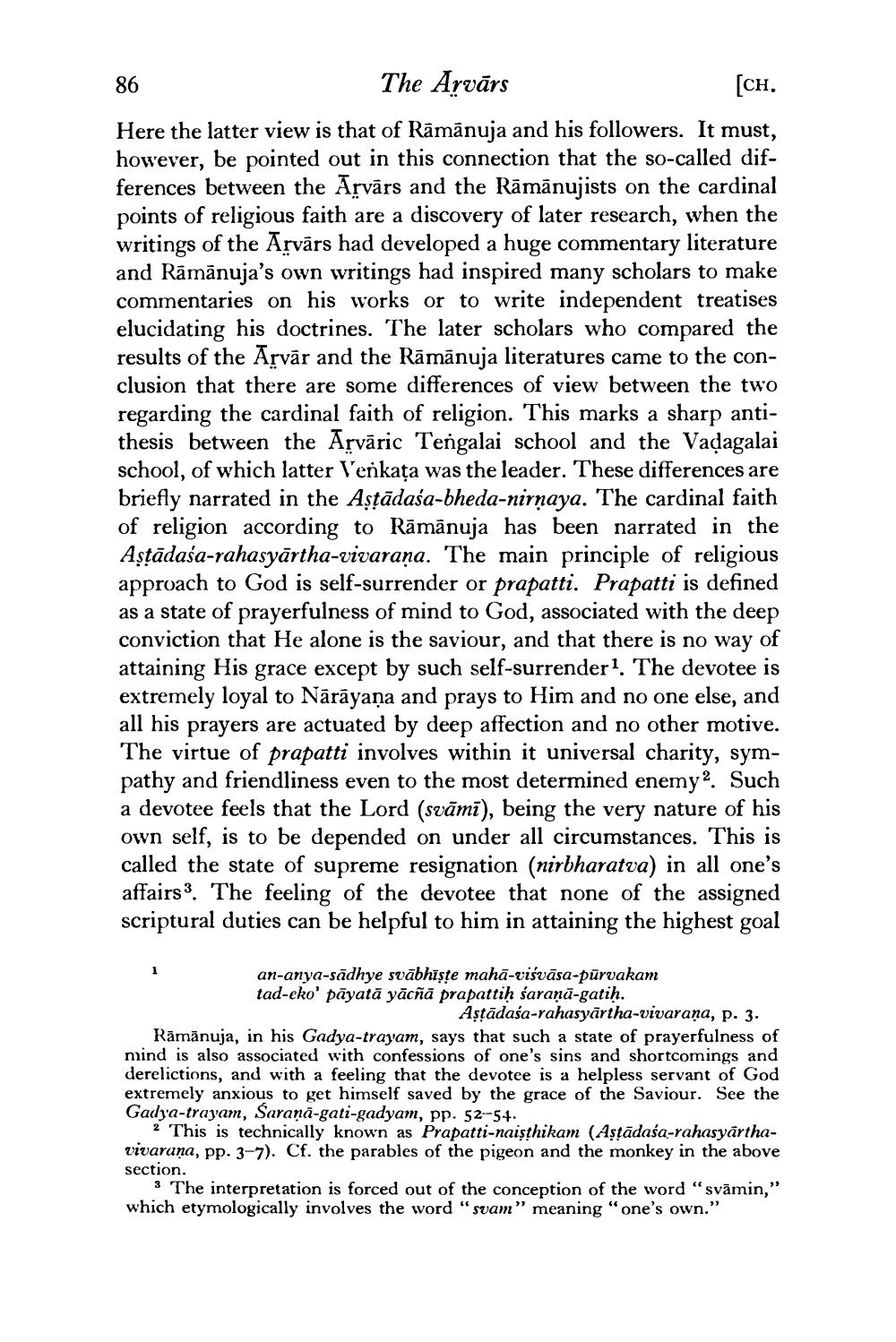________________
86 The Arvārs
[CH. Here the latter view is that of Rāmānuja and his followers. It must, however, be pointed out in this connection that the so-called differences between the Arvārs and the Rāmānujists on the cardinal points of religious faith are a discovery of later research, when the writings of the Arvārs had developed a huge commentary literature and Rāmānuja's own writings had inspired many scholars to make commentaries on his works or to write independent treatises elucidating his doctrines. The later scholars who compared the results of the Arvār and the Rāmānuja literatures came to the conclusion that there are some differences of view between the two regarding the cardinal faith of religion. This marks a sharp antithesis between the Arvāric Tengalai school and the Vadagalai school, of which latter Venkața was the leader. These differences are briefly narrated in the Asțādaśa-bheda-nirnaya. The cardinal faith of religion according to Rāmānuja has been narrated in the Astādaśa-rahasyārtha-vivarana. The main principle of religious approach to God is self-surrender or prapatti. Prapatti is defined as a state of prayerfulness of mind to God, associated with the deep conviction that He alone is the saviour, and that there is no way of attaining His grace except by such self-surrenderl. The devotee is extremely loyal to Nārāyaṇa and prays to Him and no one else, and all his prayers are actuated by deep affection and no other motive. The virtue of prapatti involves within it universal charity, sympathy and friendliness even to the most determined enemy. Su
levotee feels that the Lord (svāmī), being the very nature of his wn self, is to be depended on under all circumstances. This is called the state of supreme resignation (nirbharatva) in all one's affairs? The feeling of the devotee that none of the assigned scriptural duties can be helpful to him in attaining the highest goal
an-anya-sādhye svābhīște mahā-viśvāsa-purvakam tad-eko' pāyatā yācñā prapattiḥ saraņā-gatih.
Aștādaśa-rahasyārtha-vivarana, p. 3. Rāmānuja, in his Gadya-trayam, says that such a state of prayerfulness of mind is also associated with confessions of one's sins and shortcomings and derelictions, and with a feeling that the devotee is a helpless servant of God extremely anxious to get himself saved by the grace of the Saviour. See the Gadya-trayam, Saraņā-gati-gadyam, pp. 52-54.
2 This is technically known as Prapatti-naişthikam (Astādaśa-rahasyārthavivarana, pp. 3-7). Cf. the parables of the pigeon and the monkey in the above section.
3 The interpretation is forced out of the conception of the word "svāmin," which etymologically involves the word "svam" meaning "one's own."




